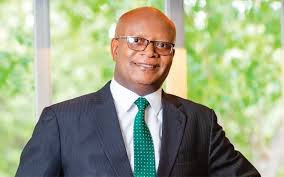
Cash shortages in Zimbabwe have persisted more than a month after the new administration led by President Emmerson Mnangagwa assumed power.
BY TATIRA ZWINOIRA
A snap survey last week by Standardbusiness established that the situation has in fact worsened as the cash-back facility that used to plug the gap has disappeared. Last year, the Reserve Bank of Zimbabwe prescribed a $20 maximum cash-back payout per person.
“Retailers are no longer giving out cash to customers and this is attributed to a surge in plastic and mobile money usage [which has grown] to almost 85%”, said Confederation of Zimbabwe Retailers president Denford Mutashu.
In a recent interview, Bankers Association of Zimbabwe president Charity Jinya said banks were prioritising companies for cash disbursement.
“We are fully aware that we are importing more than we are exporting, have limited investment and that diaspora remittances are not covering the trade deficit; so it simply reflects the reality on the market. Most banks would naturally consider that it would be better to finance a company to import inputs to generate jobs and employment revenues than to simply use the forex for travelling outside the country, hence the restrictions on those [bank] cards,” Jinya told Standardbusiness.
She said the banks got foreign currency from exports but that money accruing in banks was quickly gobbled up by importers.
So dire is the situation that disbursement through automated teller machines (ATMs) during the festive season was 81% lower than the same period the previous year.
- Chamisa under fire over US$120K donation
- Mavhunga puts DeMbare into Chibuku quarterfinals
- Pension funds bet on Cabora Bassa oilfields
- Councils defy govt fire tender directive
Keep Reading
During the week ending December 29 2017, disbursement through ATMs was $3,6 million compared to $19,37 million in the same period in 2016.
While consumption was lower than 2016, Consumer Council of Zimbabwe executive director Rose Siyachitema said there was a “slight” improvement during the festive week in 2017, although the figures were insignificant as withdrawing cash was difficult.
“I do not think there was ever a situation where there was plentiful money coming from the banks. What we understood or heard was that there was some improvement where consumers were getting some money from ATMs, but it was not plentiful,” she said.
The cash crisis has also seen the massive return to the streets of cash dealers who have invaded the central business district with a vengeance. They are out in clear defiance of the legislation which criminalises money laundering and prescribes a jail term of 10 years for offenders.
Rates for the greenback are ranging from 40 to 45% when using EcoCash or bank transfers.
Long queues can still be seen at almost every bank in every city, town and growth point across the country.
Government advisor and economist Ashok Chakravarti said while the balance of payments was improving and would further improve as the year progressed, there was need to review the foreign currency management from banks.
“When it comes to liquidity and cash, I think we need to be very honest with ourselves. This is a basic problem that emerges out of the nature of dollarisation. It has nothing to do with Zimbabwe. Dollarisation is not a mechanism that solves the cash and liquidity crunches. So to get rid of this issue of how people can access their deposits and for the cash crunch to go away, we need to look at fundamental monetary reform. There is no way out of that,” Chakravarti said.
“Until we have that monetary reform, I can assure you that there will be perpetual cash shortages. So this monetary reform especially consists of finding a way of going back to our national currency, which of course requires preconditions.”
He said some legislators had also expressed interest in finding out how the central bank and banks managed foreign currency.
“People should not have high expectations for the government to solve this because it is not really within government control.
This is something that has been going on for the past seven or eight years. Fundamental monetary reform is required, so people must not think that because we now have a change of government, the problem is over,” Chakravarti said.
At a breakfast meeting last Wednesday in Harare, Finance and Economic Planning minister Patrick Chinamasa said cash supply in the country had gone up by 16%, but the problem was that it was not circulating.
“What I need to point out on this issue is that the future lies on electronic transactions and that applies for all countries. But, there is always room for cash-based transactions which would constitute normally about 10 to 15% of the total value of transactions,” he said.
“What we need to address as we go forward is a more efficient circulation of currency, including of course addressing leakages. Currently, there is no efficient circulation of money. There is in the market, cash of up to 16% in the economy but because it is not coming back to us, it becomes a real problem.”
He said increased production and exports would improve the cash situation.
In his inaugural speech, Mnangagwa said liquidity challenges had to be tackled head on, adding that depositors had to be able to access their earnings and savings.
However, Confederation of Zimbabwe Industries president Sifelani Jabangwe said the foreign currency situation in the country was showing signs of improvement for manufacturers.
“I think that most of those [measures to support manufacturers] are still just starting to be rolled out, but at least what I can say is that they have managed to keep us going. There are no company closures that have resulted from failure to access currency, but it is just basically a situation of having one’s head above the water. We are just getting barely enough to keep going. We are seeing a softening of rates, which I think is an indication that there is starting to be a bit more currency in the economy,” he said.
He said he expected the current situation to improve as the year progressed.










